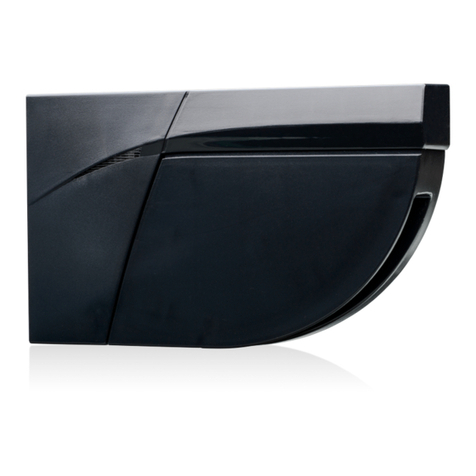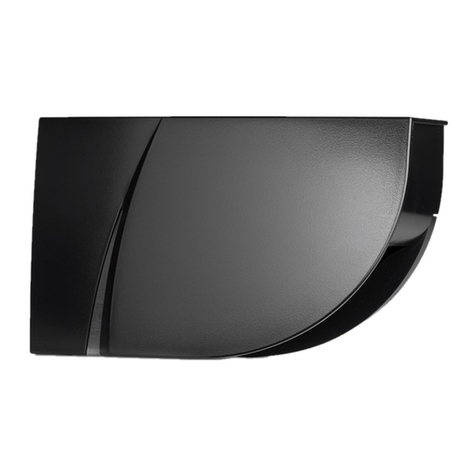
4
10 cm
0°
45°
90°
0° 0°
0° 0°
It is important to understand some basic principles before installing the sensor and that all installation steps are carefully
followed.
The sensor has to learn a reference when the safety field is the
only protection against contact between the vehicle and the
boom.
The reference can be adjusted on any type of object already
present on site (wall, tree, barrier boom support) or on a post.
Always make sure the object on which the reference is adjusted:
• is positioned in the continuity of the 0° laser beam
• is positioned min. at the end of the boom or farther away
than the end of the boom
• has a surface of +/- 10 cm (min. 5 cm)
• is firmly fixed to the floor and not subject to vibrations.
Always make sure the maximum distance for the teach-in of the
reference is 9.90 m. Above this distance, the teach-in won’t be
possible.
Use reflective sticker when the distance
between sensor and reference is higher
than 5 m.
If the safety field is the only protection against contact with
the boom, the safety field of the sensor must be situated right
under the boom.
This is only possible when the sensor is positioned correctly
and the reference has been learned.
The detection field width must be adjusted to the hazardous
area.
In order to maximise safety in case of mixed traffic (vehicles
and trucks), an additional vertical detection zone is
recommended (LZR-I100).
The sensor and detection field position are very important for
the good functioning of the barrier.
In order to position the sensor correctly, it is possible to use a
visual aid. 3 visible red laser beams can be activated by remote
control:
The visible laser beams are also used to determine the
reference of the sensor in order to ensure the safety of the
barrier.
BASIC PRINCIPLES
REFERENCE
VISIBLE RED LASER BEAMS
SAFETY FIELD





























